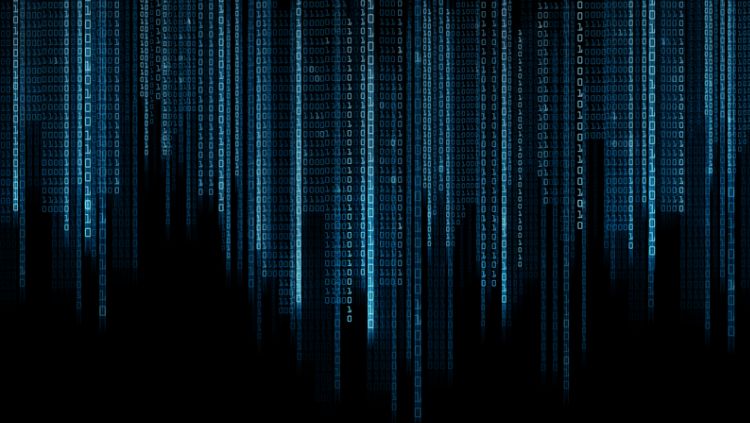On March 28, 2022, the Lok Sabha voted for introducing the Criminal Procedure (Identification) Bill, 2022 (‘the Bill’). The Bill seeks to collect what it terms as ‘measurements’ from certain classes of persons and allows for its processing, storage, preservation, dissemination, and destruction, with the stated aim of identification and investigation in criminal matters and of prevention of crimes. In its aim, the Bill repeals the Identification of Prisoners Act, 1920, but continues to interact with provisions of the Code of Criminal Procedure, 1973, which continue to occupy the field. The Bill will also interact with the DNA Technology (Use and Application) Regulation Bill, 2019, if both are passed as Acts.
In replacing the existing frameworks, the Bill poses several regulatory, scientific, and constitutional concerns. These concerns have been comprehensively raised in Project 39A’s Report titled ‘An Analysis Of The Criminal Procedure (Identification) Bill, 2022’ (accessible here). In this blog post, we provide a summary of the concerns highlighted.
What Does the Bill Seek to Do?
The Criminal Procedure (Identification) Bill, 2022 in Cl. 2(1)(b), defines ‘measurements’ that may be taken from persons as including “finger-impressions, palm-print impressions, foot-print impressions, photographs, iris and retina scan, physical, biological samples and their analysis, behavioural attributes including signatures, handwriting or any other examination referred to in section 53 or section 53A of the Code of Criminal Procedure, 1973.”
Cl. 3 allows a police or prison officer, if required, to compel the following classes of persons to give all their ‘measurements’:
- Any person who has been convicted of any offence under a law that is in force;
- Any person who has been ordered to give security for maintaining peace or good behaviour following the procedure prescribed under Section 117 of the CrPC. Such security may be ordered for reasons covered under Sections 107-110 of CrPC. First, it may be upon information that the person is likely to breach the peace or disturb the public tranquillity of an area; or second, upon information that the person disseminates seditious and certain other publications; third, upon information that the person is concealing his presence in the area in order to commit a cognizable offence; or fourth, upon information that the person is a habitual offender;
- Any person who has been detained under any preventive detention law;
- All persons who are arrested for an offence. Such persons can be compelled to provide all measurements except biological samples. However, all persons who have been arrested for an offence against a child or a woman, or for an offence punishable with imprisonment of 7 years or more, can be compelled to provide biological samples as well. Therefore, all those arrested for offences that do not involve women or children, and are punishable with imprisonment of less than 7 years, cannot be compelled to provide biological samples, but can be compelled to provide all other measurements.
Cl.5 of the Bill further expands the scope of persons from whom the giving of measurements may be compelled. Cl.5 provides that the Magistrate may direct “any person” to give measurements, upon being satisfied that it is “expedient” to do so for the purposes of an investigation orproceeding under the CrPC or any other law.
Cl. 4(1) identifies the National Crime Records Bureau (‘NCRB’) as the nodal agency at the central level for collecting, storing, preserving, destroying, processing, and disseminating ‘records of measurements’. It requires the NCRB to conduct these tasks in the interests of “prevention, detection, investigation and prosecution” of offences.
Cl. 4(1) allows the manner of storage and dissemination of records of measurements, and the circumstances under which such dissemination can be allowed, to be prescribed by Rules under the Bill. Cl. 4(2) provides that such records of measurements are to be stored digitally or electronically.
Cl. 4(3) allows State Governments to notify agencies for the collection, storage and sharing of the measurements themselves, that is, the samples collected as opposed to the records or analyses of such samples.
What Does the Bill Leave Out?
First, the Bill does not provide an exact definition of ‘measurements’. The definition provided in Cl. 2(1)(b) is an inclusive one, and is open to an expansive interpretation. Further, terms used therein like ‘biological samples’ and the ‘analysis’ of biological samples remain undefined. This is a significant deviation from the existing law under the CrPC dealing with examination of the body for evidence [Sections 53], which specifically defines the samples on which such examinations can be conducted. Under this Bill, it is unclear which kinds of measurements constitute ‘biological samples’. Similarly, the scope of the term ‘analysis’ is left undefined and could cover a wide range of processing of biological material, including analysis that does not have any forensic value for the purposes of investigations. A similar problem of ambiguity is also apparent in the use of the term ‘behavioural attributes’ within the scope of measurements.
Second, the Bill uses two distinct terms in Cl. 3 and Cl. 4 – ‘measurements’ themselves, and the ‘records of measurements’. Cl. 4(1) and (2) cover ‘records of measurements’, while Cl. 4(3) covers only ‘measurements’. Each is stored, preserved and shared by a different nodal agency. However, the Bill does not define what would be considered within the scope of ‘records of measurement’ and this leaves ambiguous the infrastructure that would be required for the digital and electronic form of storage of records.
Third, Cl. 4 of the Bill evidently seeks to create some form of database(s) managed by the National Crime Records Bureau containing the records of measurements collected. However, it does not use the term database, and does not seek to define any further infrastructural, management and operational aspects of the database.
Fourth, Cl. 4(1) of the Bill provides that the NCRB may share and disseminate records of measurement with law enforcement agencies. Cl. 4(3) provides for storage and sharing of ‘measurements’ (not records) at the State-level. However, no further stipulation on the purpose of such dissemination has been provided. Specifically, it is unclear whether the NCRB or other agencies may only share measurements or records thereof for use itself as evidence or to access other evidence, for instance, through the use of a person’s biometric information stored on the database, to access his/her devices that carry personal information.
Constitutional Law Perspectives
The present Bill violates the right to equality under Article 14, the right against self-incrimination under Article 20(3) and the right to privacy under Article 21.
Article 14
Excessive Delegation of Legislative Powers: The Bill falls foul of Article 14 as it excessively delegates legislative powers by giving the Central and State Governments wide-ranging rule-making powers, without providing adequate guidance for the exercise of the same.
Grant of Excessive Discretion: The Bill grants excessive and overbroad discretion to police and prison officers as well as Magistrates to compel persons to allow the taking of their measurements. Such excessive and uncontrolled discretion is arbitrary, and also raises the concern of discriminatory exercise of these powers.
Manifest Arbitrariness: Several provisions of the Bill do not disclose an adequate determining principle. First, the overbreadth of the definition of ‘measurements’ raises concerns about whether the indiscriminate collection of all types of ‘measurements’ can actually achieve the purpose of more efficient investigation and crime prevention. Second, the failure to disclose a basis for the taking of measurements under the Bill contributes to its arbitrariness. Third, the absence of a mechanism for destruction of measurements and records of persons who have not been convicted or arrested or detained or ordered to furnish security for good behaviour or maintaining peace is arbitrary. Finally, Cl. 6, which makes it an offence to refuse or resist the taking of measurements, without the Bill providing clear guidance on who is obliged under the law to allow his/her measurements to be taken, is arbitrary.
Unreasonable Classification: The proviso to Cl. 3 classifies arrested persons on the basis of the gender/age of the victims of their suspected offence, and on the basis of the severity of punishment provided for the suspected offence. Only those arrested for offences punishable by 7 years or more, or those arrested for offences against a woman or a child may be compelled to give their biological samples; whereas, all arrested persons may be compelled to give measurements other than biological samples. This classification bears no rational nexus to the aim of making investigations more efficient, whether in a given case or more generally, in future cases.
In addition, it is important to note that Cl. 4 of the Bill also mentions crime prevention as one of its purposes, “in the interest” of which the NCRB shall collect, store, process, preserve, share and disseminate the records of measurements. Thus, the Bill also raises concerns regarding existing biases in data leading to discriminatory police practices and further stigmatisation of vulnerable communities.
Article 20(3)
Cl. 2(1)(b) of the Bill defines measurements to include “…behavioural attributes including signatures, handwriting…”. The term ‘behavioural attributes’ has not been further defined in the Bill and is also not a term of art in forensic science. This leads to concerns of its possible interpretation in a way that might include measurements of a testimonial nature, allowing them to be compulsorily procured, in contravention of the ruling in Selvi v. State of Karnataka.
Article 21
The Bill amounts to an infringement of the informational privacy of persons it covers; and, to be constitutional, it must satisfy the fourfold requirement of the doctrine of proportionality laid down in Justice KS Puttaswamy v Union of India (I). While the Bill has the legitimate aim of improving investigation, detection and prevention of crimes, it fails to satisfy the other three prongs of proportionality.
Suitability: There is no demonstrated rational nexus between the increased likelihood of future or past offending and the class of persons included in Cl. 3 (convicts of all offences, detainees, arrestees, those ordered to give security for maintaining peace and good behaviour) whose measurements may to be taken. Further, Cl. 3 and 5 do not require that the measurements be taken from persons in circumstances which would show that such taking will aid in a specific investigative matter. Thus, given the lack of rational nexus between the provisions of the Bill and the legitimate aim espoused by it, the provisions of the Bill are not suitable for its legitimate aims.
Necessity: The Bill has an overbroad coverage of persons who may be compelled to give measurements. It provides no timeframe for deletion of records of measurements for convicted persons, detainees, as well as those compelled under Cl. 5 (including juvenile offenders), and no other procedural safeguards to minimise infringement of the right to privacy. Together, these factors make the extent of infringement on privacy caused by the Bill unnecessary for the purposes of achieving the State’s legitimate aim.
Balancing: The Bill provides no purpose limitation, i.e., no indication of the purposes for which measurements and the records collected and stored can be used. Additionally, Cls. 3 and 4 allow for blanket collection, storage, processing, use and sharing of measurements taken from convicts (possibly even ex-convicts), persons who have furnished security under Section 117 of the CrPC, been arrested for any offence, or detained under preventive detention laws. No gradation is made on the basis of severity of offence, its nature, whether the determination of guilt has taken place. Thus, the infringement on the right to privacy is disproportionate to the legitimate aims the Bill seeks to pursue.
Issues of Science and Regulation
Scientific validity and databasing
There exists no scientific evidence to support the foundational validity of certain types of measurements covered within the Bill. India currently also lacks adequate scientific standards for examinations of such measurements for the purpose of investigations. These two issues are further exacerbated by the fact that current legal standards for examining expert evidence do not allow for rigorous scrutiny of scientific evidence. Therefore, the collection and databasing of such a wide range of measurements is an unnecessary measure which may not make investigations more effective and instead make them problematic.
Collection of measurements
Capacity building and training of individuals responsible for collection of measurements will be a huge administrative undertaking. The workload of forensic laboratories will also increase multiple folds due to the excessive collection of measurements. Currently, the Bill provides no guidance to the Central or the State governments on the framing of rules for the purpose of collection of measurements. As the Bill does not qualify the need for standardisation or quality management, it allows for arbitrary collection methods to be used across the country. In the absence of data protection, such extensive collection of measurements without any guidance on information sharing within the Bill, raises concerns about third party access and breach of confidentiality.
Collection and storage of “biological samples and their analysis”
As it stands, “analysis” is not defined in the Bill, and this expands the scope of information to be collected to include an individual’s phenotype (physical characteristics), their genetic propensity for certain diseases and their ancestry. The information therefore collected and stored may even go beyond the individual from whom the measurement is collected. Storage of the biological samples themselves will be a massive infrastructural challenge. Given that these samples may be stored in perpetuity, it raises further concerns regarding the misuse of this information.
Storage of “records of measurements”
Creation of extensive database(s) which include different types of measurement does not guarantee better criminal investigations. The Bill is drafted on the flawed assumption that such databases will aid criminal investigations. As criminal investigations are undertaken with respect to the context of a particular case, it is impossible to quantify the different evidence types that may be of probative value in a particular case. Therefore, creation of such database(s) with no safeguards regarding information sharing will be a costly exercise which will be an infringement of the right to privacy.
Comparison of present Bill with the DNA Technology (Use and Application) Regulation Bill, 2019
The DNA Bill, currently pending discussion in the Parliament, raises several constitutional and procedural concerns. Yet, given the overlapping scope of the DNA Bill with the present Bill, with reference to collection and storage of “biological samples and their analysis”, it is important to analyse the framework that exists within both. Even with multiple gaps within the DNA Bill, it still provides multiple safeguards regarding the collection, storage, use and disposal of samples. Such safeguards are clearly missing with the present Bill. Considering that the Bill envisions creation of multiple databases and provides sweeping powers to investigative authorities, the lack of such safeguards is especially concerning.
Lack of regulation of databases
The Bill presently provides no framework or guidance with reference to quality management of databases. Considering that the Bill envisages the use of the databases for the purpose of investigations, it is imperative that some clarity on the quality of “measurements collected” and “storage of records of measurements” be provided. Given that there is no guidance regarding the manner in which records are to be shared, the lack of standardization with respect to procedures for forensic examination and investigation and the sweeping powers being bestowed upon investigative authorities, such lack of regulation is deeply concerning.
In conclusion, the Bill has wide-ranging implications for the right to privacy, equality, and for the integrity of investigative processes. It is the hope that the Report will engender more informed debate on the merits of the Criminal Procedure (Identification) Bill, 2022.
To know more, access the Report along with its executive summary here.





